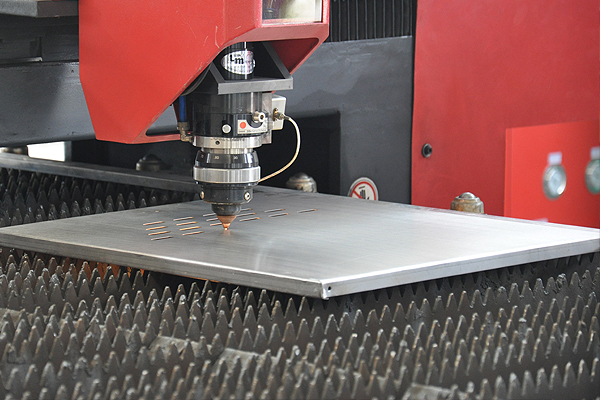Application and principle of laser microdrilling technology
It is common to make a small hole in a component.However, if it is required to make a large number of holes from 0.1 mm to several microns in diameter in hard materials, such as cemented carbide, it is not easy to do with ordinary machining tools, and even if it can be done, the processing cost will be high.The existing machining technology is to use tens of thousands of revolutions per minute or hundreds of thousands of RPM of high-speed rotating small bits processing materials, with this method generally can only machining holes more than 0.25 mm diameter.In today's industry, it is often required to process holes with diameters smaller than this.In the electronics industry, for example, the production of multilayer printed circuit boards requires the drilling of thousands of holes, about 0.1 to 0.3 mm in diameter, into the board.Obviously, to use the said bit for processing, we will encounter great difficulties, processing quality is not easy to guarantee, processing cost is not low.As early as in the 1960s, scientists used lasers to punch tiny holes in steel blades in the laboratory. After nearly 30 years of improvement and development, it is now no longer difficult to punch tiny holes in materials with lasers, and the processing quality is good.The perforated holes are neat and without any burrs.The drilling speed is also very fast, about a thousandth of a second to punch a hole.
The principle of laser drilling holes in the material is very simple (laser drilling), the method is not complicated.
Lasers are so coherent that optical systems can focus them into tiny spots of light (less than 1 micron) in diameter, the equivalent of a "micro-bit" for drilling holes.Second, the brightness of the laser is very high, in the focus of the focus on the laser energy density (energy per square centimeter area) will be very high, ordinary a laser, laser output energy can be as high as 109 joules/cm 2, enough to let the material melting and vaporization, leaving a small hole on material, and out of a sample with a drill.
Laser scientists have also done a lot of research on how to use the laser "drill bit".They found that "drills" made with many light pulses per second (often called high-repetition laser pulses) produced holes of better mass than those made with a single light pulse, or a few light pulses per second.It goes something like this: when drilling with one pulse per second, or a few pulses, the laser energy required for each pulse is so high that the material can be heated to melt before the hole can be punched.The melted material, however, does not vaporize adequately. Instead, the material near it is heated and vaporized. As a result, the holes are less uniform in shape and size.If a high repetition rate laser is used to output an optical pulse, the average energy of each optical pulse is not very high, but due to the width of the pulse, the power level is not low.So each laser pulse on the material to form a small amount of melt, mainly vaporization.Since there is little melt when the material near the hole is heated, there is no such thing as a monopulse punch.The holes are much more regular in shape and size.

In order to make the hole with high quality, it is necessary to pay attention to the selection of laser focus position.The principle of choosing the focus position is roughly as follows: for thick materials, the focus of the laser beam should be located inside the workpiece; if the material is thin, the focus of the laser beam should be placed above the surface of the workpiece.This arrangement will make the holes basically the same size up and down, without "barrel" holes.
By using laser to drill holes in the material, the quality of holes drilled is not only very good, especially when making a large number of the same holes, but also to ensure that the size and shape of a number of holes uniform, and the speed of drilling, high production efficiency.Therefore, in addition to the use of laser drilling in the electronics industry, many other industrial production departments are used, such as ordinary cigarette filter holes, small holes in the valve of the atomizer, also using laser processing.Both the can and bottle have a small hole at the neck to control the flow of compressed substances (such as deodorant, oil or other liquids), and the valve's performance is determined by the small hole in the applicator.It's about 10 to 40 microns in diameter, and it's not as easy to do with other machining methods, but it's done with a laser, which guarantees the quality and the speed.
Product Directory